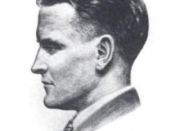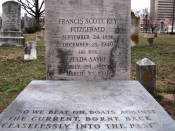Every man has his price. If known what a person wants, enough of it can induce a person to do whatever is needed. For the right amount of money most people will publicly humiliate themselves. People do this out of greed, the need for more. "The Great Gatsby" is set in the1920's, the time period after the First World War before the Depression, when the United States was in a boom. The novel features a group of people who reside in the outskirts of New York City. Nick Carraway, character in the novel, is the narrator of the novel. He follows the rich, wealthy, materialistic, and hollow characters of the novel and comments on them and their actions. Through the course of the novel the reader finds that Tom Buchanan is cheating on his wife Daisy Buchanan, Nick Carraway's cousin. Next, Jay Gatsby, Nick's neighbor, involves himself in a relationship with Daisy that has been in preparation for a log time.
Eventually everybody finds out whose cheating who, and then there is a big argument. In the end Gatsby is killed. Empty Disposition of the characters in the novel are shown through the way they act. The novel "The Great Gatsby", by F. Scott Fitzgerald, the author utilizes symbolism and the characters of his novel to portray the hollow nature of the upper class.
The characters in the novel show the emptiness of the upper class. Daisy is a materialistic woman who cares for her daughter in a "different" way. Tom is unable to attend the birth of his daughter. Daisy told Nick how she felt at he child's birth. "'All right,' I said, 'I'm glad it's a girl. And I hope she'll be a fool--that's the best thing a girl can be in this world, a...


